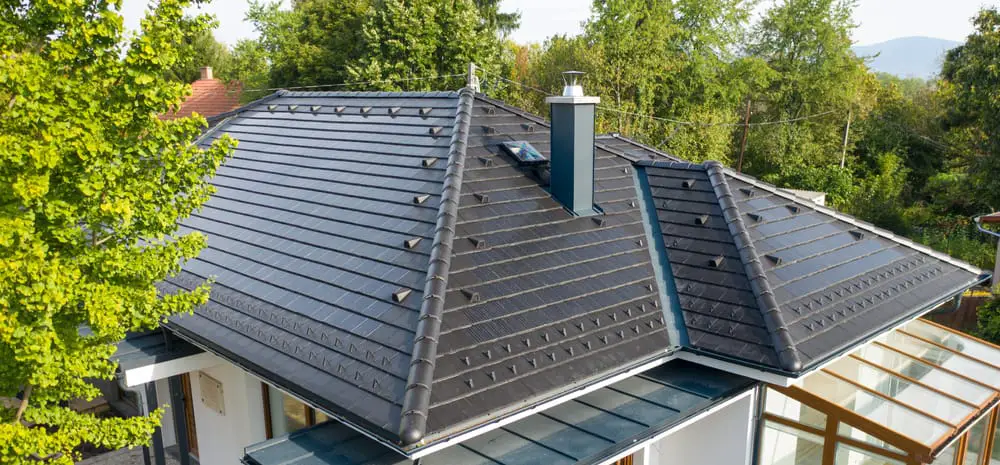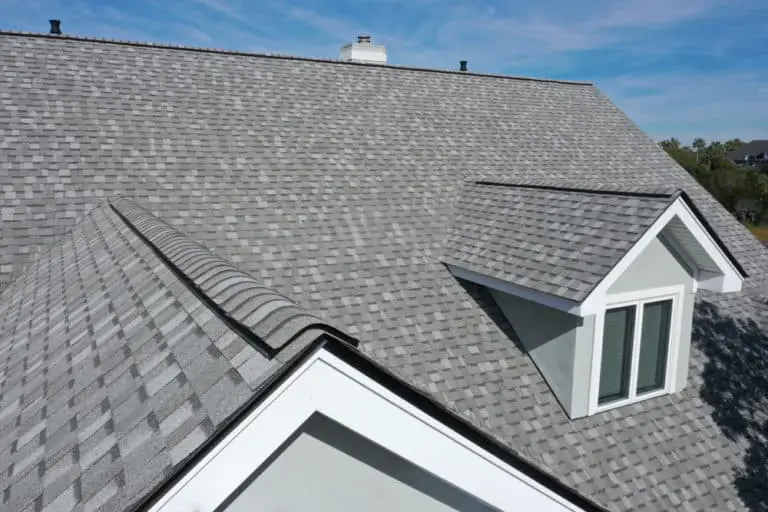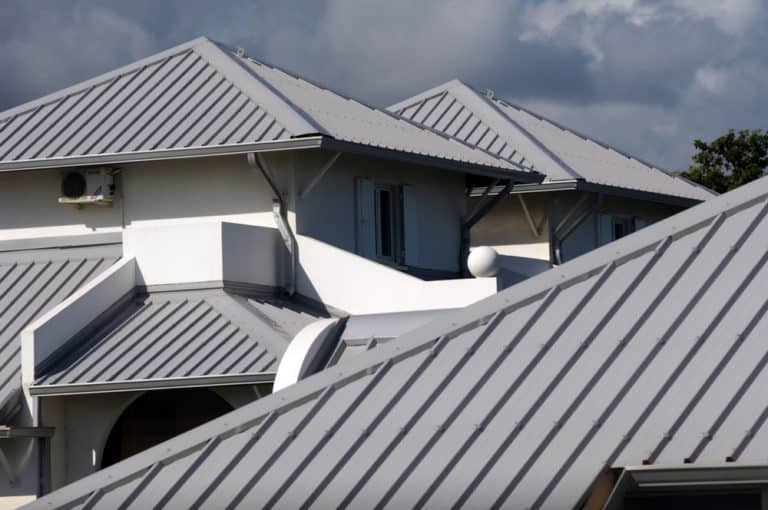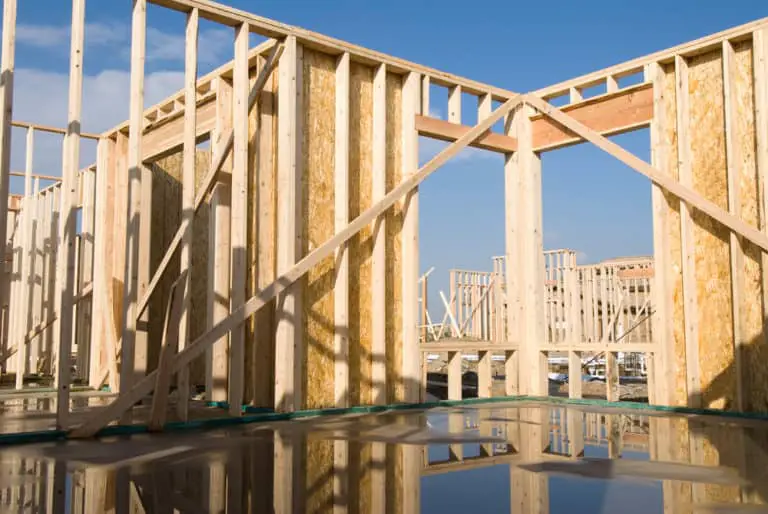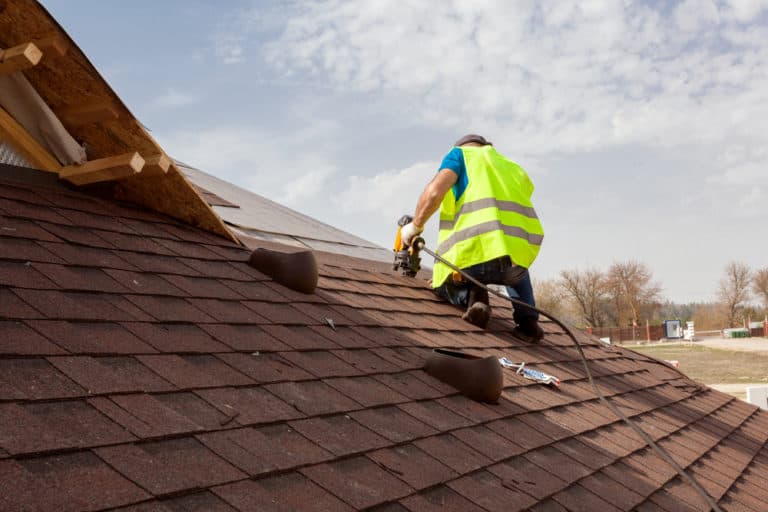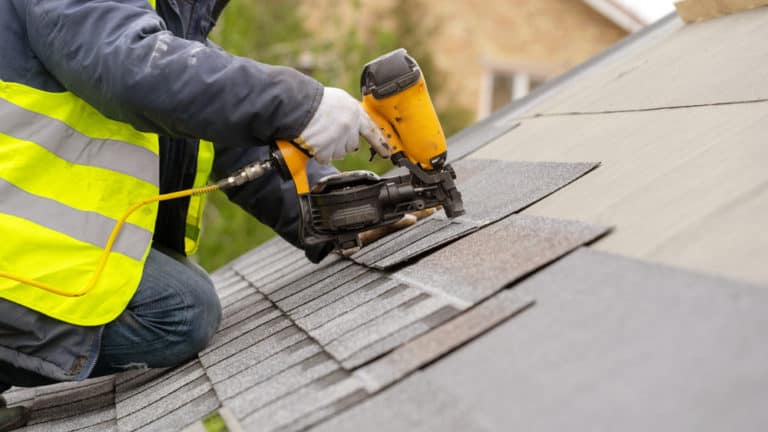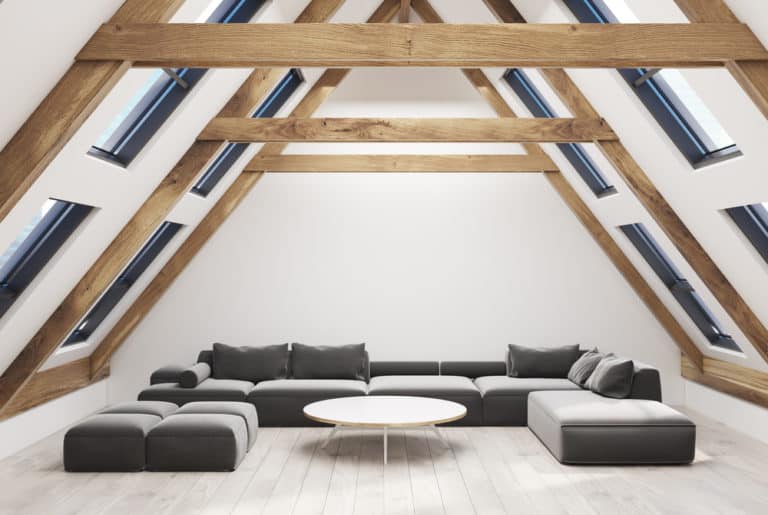What Type Of Roof Is Most Expensive?
The roof is arguably the most crucial part of a building since it protects the occupants from bad weather. It can be made out of many materials, but what is the most expensive type? Roofs are typically made of asphalt shingles, which are the cheapest roofing material. Costs for installing a roof in your home depend on the type of roof you prefer.
Most expensive roofs require a lengthy installation process, e.g. slate or copper roofs. Other roof types vary in price depending on material and design. Metal roofs come at a lower cost than others because they’re easier to install and provide both thermal insulation and protection from rain damage.
The material might also affect a roof’s lifespan—for instance; asphalt shingles last 20-25 years, while slates last 50-100 years. Roofing contractors typically charge an average of $5-$8 per square foot to install a new roof, depending on the complexity and materials used in your project. In addition, there may be other costs such as repairs or maintenance that need to be taken into consideration when choosing roof types and how expensive they’re. You should also consider roof maintenance.
Here are some of the most expensive roofs:
1. Solar Panels
These are some of the most expensive roofs. In some cases, solar panels can cost up to three times as much as a traditional roof. They are considered costly because they require high-quality equipment to avoid damaging the building and the panels.
Pros of Solar Panels
- Solar panels do not require any upkeep and can be paid off by the end of the year. Solar panels are one of the most expensive roofs because they require high-quality equipment to avoid damaging the building and the panels.
- Solar panels are beneficial because they do not require upkeep, unlike traditional roofs.
Cons of solar panels
- The installation process can be complex for some people, especially if they’re not experienced. If you’re thinking about installing solar panels, make sure you know what you’re doing.
- Solar panels can cost a lot of money upfront, especially since they are one of the most expensive roofs.
2. Copper roofs
Copper is a costly material. Imagine how much more expensive it gets when used on a roof. Copper roofs are expensive because they are durable and do not require any maintenance. They are one of the longest-lasting roof types available.
You’ll need special tools for working with copper, making it challenging to find professionals who can help with installation. A strong, long-lasting material, copper can be beneficial for your home if you want to keep costs down.
Pros of copper roofs
- Copper is a strong, long-lasting material that can be beneficial to your home if you want to keep costs down.
- Copper roofs are the least expensive roofs to maintain because they require little upkeep and low maintenance.
Cons of copper roofs
- Copper roofs are one of the most expensive roofs to install and maintain because they require special tools for working with and installation. However, the installation process is complicated and time-consuming.
3. Slate Roofs
Slate is a popular roofing material because it is long-lasting and can handle harsh weather conditions. Slate roofs are often considered the most expensive because they’re luxurious, beautiful, durable, and high maintenance. Slate roofs cost around $8-$9 per square foot. Slate roofs are much more expensive than asphalt shingles because they require special equipment to install and last for more than a century and do not require regular maintenance. Using slate is a time-consuming process because it’s heavy, uncomfortable to work with, and in some cases, hazardous.
Pros of slate roofs
- Slate is a popular roofing material because it’s long-lasting and can handle harsh weather conditions.
- Slate roofs are the least expensive roofs to maintain because they require little upkeep and low maintenance.
Cons of slate roofs
- Slate is a heavy, uncomfortable material to work with, which makes it more challenging to install. In some cases, slate is hazardous and can be dangerous to work with.
- Slate roofs are one of the most expensive roofs to install and maintain because they require special tools for working with slate.
- It’s heavy, uncomfortable to work with.
4. Metal Roofs
Metal roofs are popular with commercial buildings because of their ability to be completely recycled at the end of their life cycle. While the upfront cost is up to five times more than a standard roof, metal roofs are often cheaper in the long run due to their durability and recycling capabilities. Metal roofs cost more than asphalt shingles because they have a longer lifespan.
They last about 20 years on average before it needs replacement. Installing metal roofing can cost at least $5,000, which is more than double or triple the cost of other roof types. However, metal roofs are beneficial because they last a long time and require low maintenance.
Pros of metal roofs
- Metal roofs are the least expensive roofs to maintain because they require little upkeep and low maintenance.
5. Wood or Shingle Roofs
Wooden roofs are popular because they can help a building blend in with its surroundings. Cedar shingles and European-style tiles, among others, are costly options for wooden roofs. Many roofs are made of wood that is covered in asphalt shingles. Wooden roofs are cheaper, but they require upkeep, or they could rot away. To be safe, homeowners often invest in a roof care plan. Wooden roofs are also less pricey at about $5-6 per square foot. Wood or shingle roofs are one of the least expensive roofs to install.
Pros of wood or shingle roofs
- Wood roofs are one of the least expensive roofs to install.
- Wood or shingle roofs can benefit your home if you want a simple roof that needs little upkeep.
Cons of wood or shingle roofs
- Wood is vulnerable to harsh weather conditions, which can cause problems for your roof.
- Wood roofs require regular upkeep and maintenance.
- They are also very costly – you’ll need to order them from an online store or find someone who sells them locally.
- Installation is very cheap. However, wood roofs are vulnerable to harsh weather conditions and other problems. They also require regular upkeep and maintenance.
6. Tiles or Concrete Roofs
Concrete roofs are another type of roofing that lasts a long time. Tiled roofs are the most ubiquitous type of roofing around. They’re often made out of clay and used in all kinds of homes, whether modern, traditional, or Mediterranean. Tiles are among the most popular roof types because they are affordable, beautiful, and last long. A tile roof is the second most expensive type of roof, costing about $11-$12 per square foot. Concrete roofs are popular because they’re versatile and can be molded in almost any shape, and are weather-resistant, making them one of the most durable options on the market. They’re lightweight, strong and durable. They can last up to 60 years.
Pros of Tiles or Concrete Roofs
- Concrete and ceramic roof tiles can benefit your home if you want a durable roof that costly harsh weather conditions.
- Concrete and tile roofs are some of the most expensive roofs to install because they require professional help and special tools for installation.
- Concrete roofs last longer and require less upkeep; this makes them cheaper in the long run.
Cons of concrete or tile roofs
- Concrete and ceramic roof tiles are some of the most expensive roofs on the market because they require professional help and special tools for installation.
- Concrete and tile roofs are some of the most expensive roofs to install.
- They are costly when it comes to installation, especially if you’re using high-quality tiles. Concrete and ceramic roof tiles are some of the most expensive roofs on the market because they require professional help and special tools for installation.
- They’re often more expensive than other types because they require more labor and time to install.
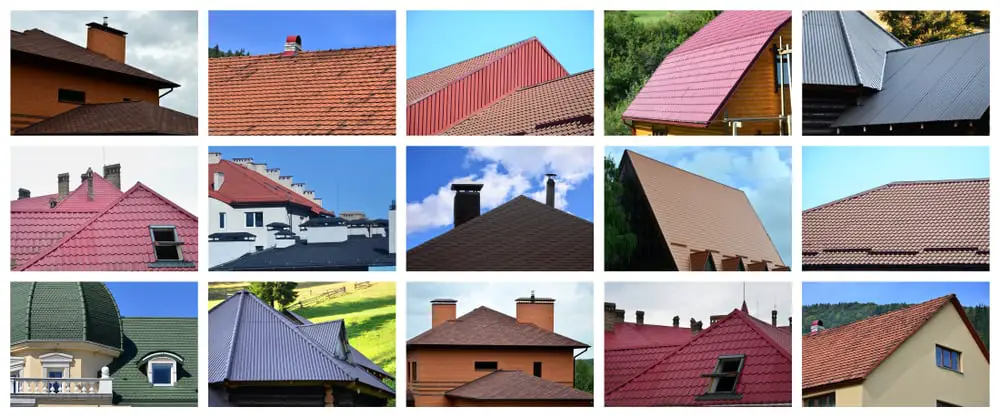
7. Thatched roof
A thatched roof is made of straw and requires regular upkeep to prevent it from rotting away. However, thatched roofs are becoming increasingly rare because they can’t handle torrential downpours and other inclement weather.
Cons of thatched roofs
- Thatched roofs are becoming increasingly rare because they can’t handle torrential downpours and other inclement weather.
- Thatched roofs are some of the most expensive roofs to install because they require regular upkeep.
- Thatch roofs are vulnerable to harsh weather conditions like other types of roofs.
- Thatch roofs are one of the most expensive roofs to install because they require regular upkeep.
8. Asphalt shingles
Asphalt roofing is the most popular type of roofing in North America. It’s also one of the cheapest in the US. However, it can be one of the most expensive roofs in other parts of the world where labor costs are higher. Asphalt shingles are the least expensive, and they only cost about $6-7 per square foot. They are the standard in many parts of America and have been since the 1960s. These roofs are cheap and easy to install, but they only last around 20 years. Asphalt shingle roofs can be relatively inexpensive and durable, but they require a lot of upkeep. It can be difficult to add on new shingles when you have an asphalt roof, and they tend to cost more than other roofs because you’ll need to replace them more often.
Pros of asphalt shingles
- Asphalt shingle roofs are inexpensive and easy to maintain. If you like to spend time working on your house, asphalt shingle roofs can save you money by requiring less maintenance than other roofs.
Cons of asphalt shingles
- They aren’t as strong and durable as other roofs, so you might have to replace them frequently.
- The materials for asphalt shingle roofs are usually more expensive than other types of roofs.
9. Green roof
A green roof is covered by vegetation and can sustain plant life without extra help. Green roofs are prevalent in Europe and are becoming increasingly popular in the US. However, green roofs can be expensive because they require additional time and money for construction and upkeep. Green roofs are the third most costly roof type, costing anywhere from $6-30 per square foot.
Pros of Green Roofs
- Provide insulation, which can increase the energy efficiency of a building and decrease utility expenses.
- Reduce the amount of stormwater runoff by absorbing rainwater.
Cons of Green Roofs
- Green roofs cost anywhere from $6-30 per square foot.
- Green roofs cost a lot of money for their construction and upkeep.
- Green roofs are vulnerable to harsh weather conditions like other types of roofs.
- It takes time to construct a green roof, and it can be expensive.
10. Flat roof
A flat roof is any roof that doesn’t have a slant. It’s the most basic roof type and is extremely common. There are many types of flat roofs, and they can be made out of materials like concrete, asphalt, and metal. These roofs require the cheapest material costing about $4-5 per square foot. Flat roofs cost around $8-9 per square foot. Flat roofs are one of the cheapest roof types to install, but they’re also susceptible to damage from rain, snow, and other forms of precipitation. While it may be tempting to go with a flat roof because they require less money upfront, they may be more expensive in the long run.
Flat roofs are one of the cheapest roof types to install, but they’re also susceptible to damage from rain, snow, and other forms of precipitation.
Pros of Flat roofs
- Flat roofs are one of the most affordable types of roofs to buy and install.
- You can find flat roofs in a wide variety of colors and styles, making them one of the most versatile roof types.
- One of the main benefits of flat roofs is that you won’t need any extra materials to install them. It is easy to install a flat roof yourself.
Cons of Flat roofs
- Flat roofs aren’t as strong and durable as other roof types like pitched roofs, which will need to be replaced more often.
- Since they are not very durable, flat roofs can’t handle sunlight or water
- Flat roofs are prone to damage from water and lack the durability of other roof types like pitched roofs.
11. Pitched roofs
A roof with a series of slopes is called a pitched roof. This type of roof is most common for homes and other buildings where there isn’t enough space for roof gutters. One of the main benefits of a pitched roof is that you can easily add gutter systems, making it easier to protect your roof from rain and other precipitation. Pitched roofs are the third most expensive roof type because they’re strong and durable but don’t cost as much as a flat roof. Pitched roofs cost around $6-7 per square foot.
Pros of Pitched roofs
- It’s essential to know the benefits of each roof type so that you can choose the best one for your home.
- A pitched roof is strong and durable but doesn’t cost as much as a flat roof. This makes it easier to find a good balance between cost and quality.
- Pitched roofs are cheaper than flat roofs because installing gutters is easier with pitched roofs. You can use gutters to keep water from damaging your roof, which is a problem with flat roofs.
- You can use gutter systems on a pitched roof to protect your home from any precipitation.
Cons of Pitched roofs
- Installation is slightly more complicated than a flat roof because you’ll need materials like shingles or tiles.
- It can be harder to install gutters on a pitched roof, so you might want to hire a professional to get the work done.
- Because maintenance is challenging, pitched roofs cost more than flat roofs.
- A pitched roof will cost you more since it requires extra materials when compared to a flat roof. However, they are also stronger and better with the weather.
- Pitched roofs cost more than flat roofs, but they’re also stronger and better against the elements.
If you’re interested in learning more about how installation costs vary based on different types of roofs, contact a roofing contractor in your area for more information.

